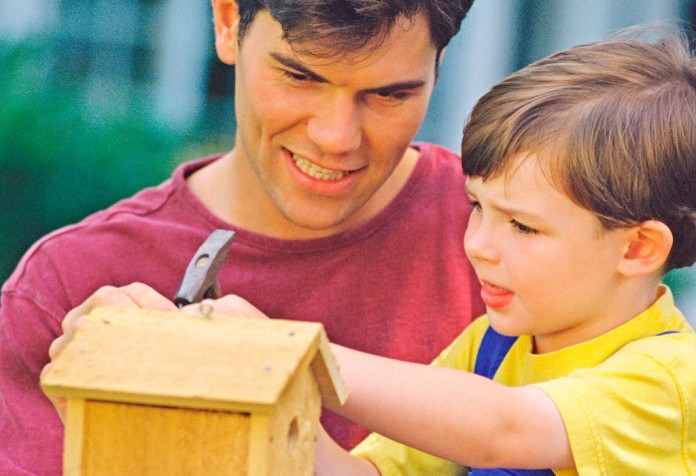
Cold weather like we’ve had in recent weeks rarely deters early cavity-nesting birds. I already have a Carolina wren nest with four eggs about to hatch and several complete bluebird clutches.
Nesting in a tree cavity or nest box confers several advantages on cavity-nesters. Perhaps the most important benefit is that cavities provide protection from cold temperatures, wind, rain, and snow, so these species can get a head start on the nesting season.
Nesting habits
Cavity-nesters typically begin nesting at least a few weeks before open-nesting birds such as robins and cardinals. Among the backyard birds that use natural cavities and nest boxes are bluebirds, chickadees, titmice, and wrens. Only about 12 percent of North America’s birds nest in cavities because few species have the strong feet and the curious, fearless disposition required to explore deep, dark nooks and crannies. Furthermore, the supply of cavities is limited, so birds compete intensely for them.
Attracting cavity-nesters is as simple as placing appropriate nest boxes in a suitable habitat. For example, open pastures, hayfields, cemeteries, and golf courses are ideal for eastern bluebirds. Forest edges attract chickadees and titmice; wrens favor dense vegetation close to homes and sheds. And tree swallows love farm ponds and wet meadows.
Fledging
Because cavity-nesters begin nesting before open-nesters, young often fledge before a major predator — tree climbing snakes — becomes active. Consequently, cavity-nesters usually experience higher nest success than open-nesters. Defined as the percent of nests that fledge at least one nestling, nest success ranges from 60 to 80 percent for cavity-nesters, while nest success for open nesters is only 20 to 40 percent. Another advantage cavity-nesters enjoy is that the young can remain safely in the nest longer. Bluebirds and chickadees, for example, stay in the nest for 17 to 21 days.
This compares to open-nesters such as chipping sparrows and robins, which fledge at just nine to 11 days of age. When cavity-nesters fledge, they are bigger, stronger, and can fly. It takes most open-nesters three or four days to get strong enough to fly after leaving the nest. That means recently fledged open nesters suffer high predation from the time they leave the nest until they can fly several days later.
Build bird boxes
Because the nesting season is just getting underway, there’s still plenty of time to build a few boxes for backyard cavity-nesters. Get the kids and grandchildren involved, and make it a family project.
A basic nest box measures 4 or 5 inches square (inside dimensions) and 10 to 12 inches high. The entrance hole should measure precisely 1 1/2 inches in diameter and be placed about 1 inch from the top. This hole size prevents bigger-bodied starlings from using the boxes. The front or side should flip open for easy cleaning. Hang nest boxes 5-6 feet above the ground on a post protected from predator baffle below. The baffle is essential because unprotected nest boxes eventually become raccoon and snake feeders.
Here are a few more tips to keep in mind:
- Use 3/4 inch stock to insulate nests from spring chills and summer heat. Though any untreated lumber will do, exterior plywood is relatively inexpensive and weathers well.
- Assemble with galvanized screws to extend the life of the box.
- Protect the roof with a shingle; it receives the greatest exposure and weathers faster than the sides. Do not paint the inside of the box.
- Extend the roof at least 4 inches over the front of the box to protect the hole from wind-blown rain and marauding paws.
- Drill four 1/4-inch drain holes in the floor.
- Never put a perch on the outside of a box. Cavity-nesters have strong feet and easily cling to vertical wooden surfaces. A perch is an invitation to invasive house sparrows to claim the box.
- Finally, use plastic coated electrical wire to strap boxes to posts. Hang boxes so they will be shaded during hot summer afternoons, and orient the hole to the east to avoid prevailing winds and driving rain.
For more information and detailed nest box plans for a variety of species, visit sialis.org.












